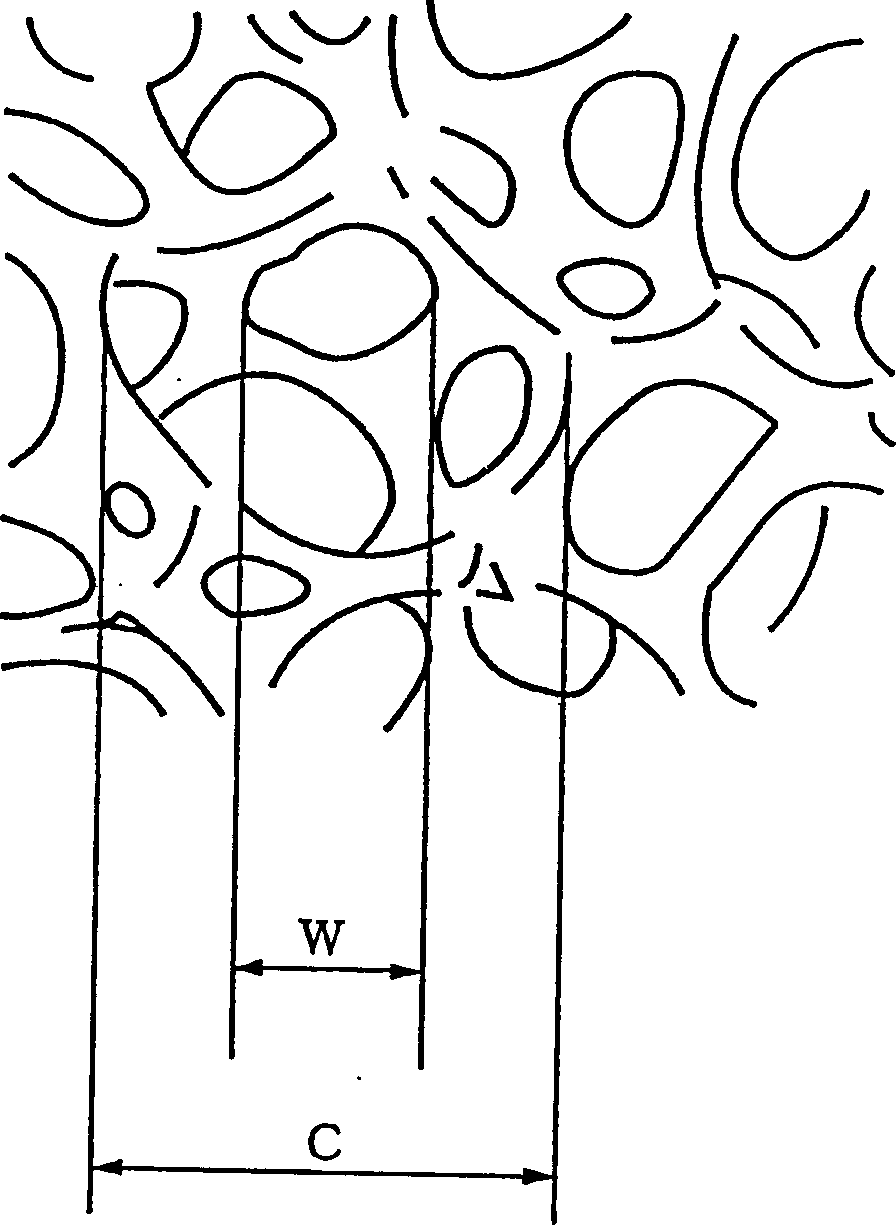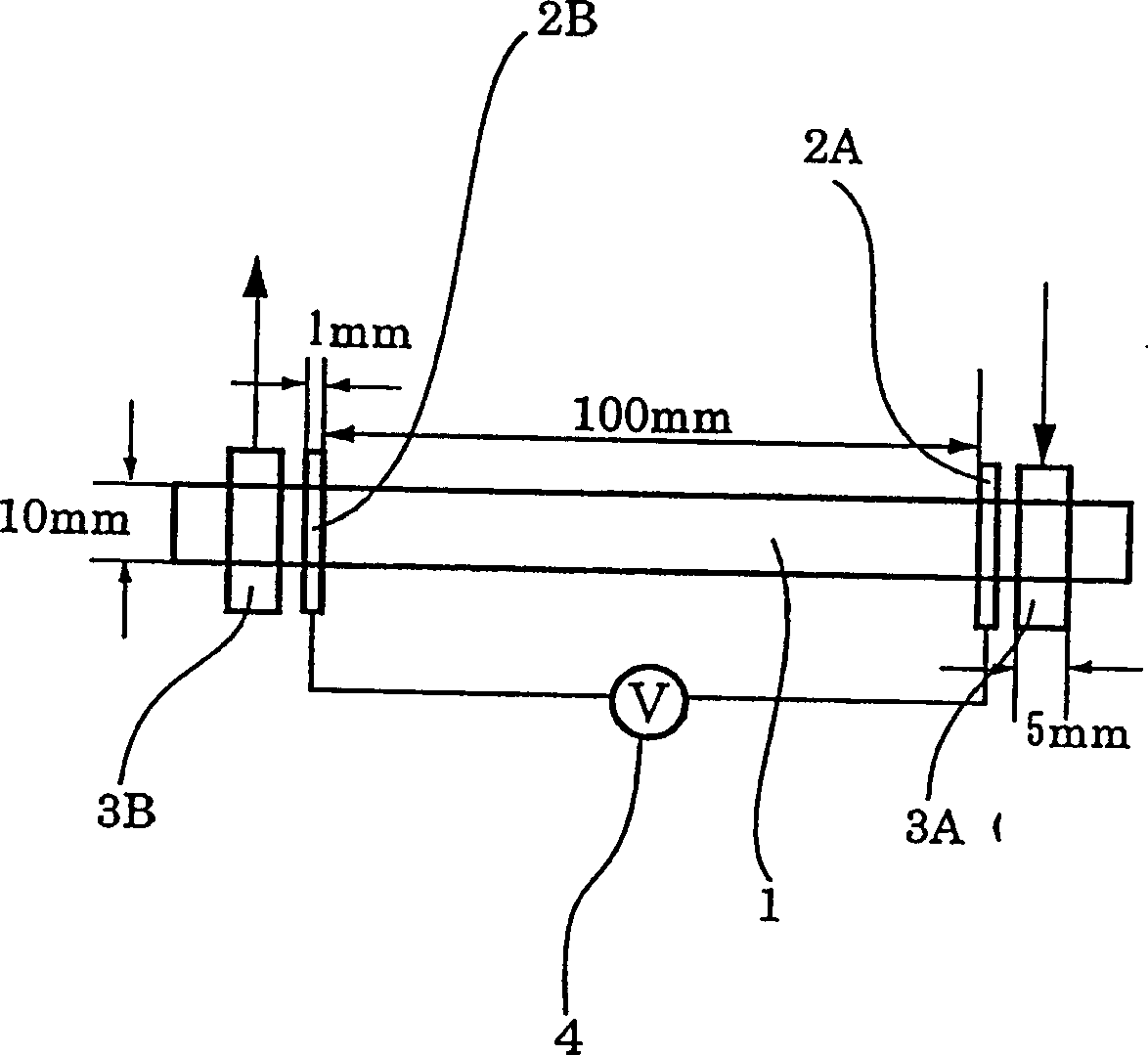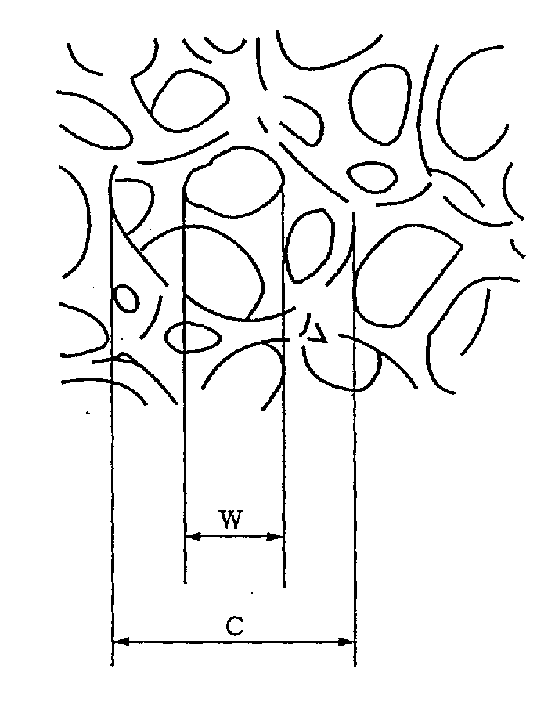Metal porous body and making method thereof, current collector for cell having same
A metal porous body, porous body technology, applied in battery electrodes, electrode carriers/current collectors, circuits, etc., can solve the problems of window size reduction, easy window blockage, cracks, etc., to achieve the effect of increasing capacity
- Summary
- Abstract
- Description
- Claims
- Application Information
AI Technical Summary
Problems solved by technology
Method used
Image
Examples
example 1
[0083] A polyurethane foam material with a thickness of 1.0 mm was used as the core. The foam has a continuous microcellular structure with cells with an average diameter of 260 microns and windows with an average diameter of 110 microns.
[0084] The core is processed through the following process to obtain a nickel coating amount of 10g / m 2 conductive porous body.
[0085] (1) degreasing treatment;
[0086] (2) washing treatment;
[0087] (3) Sensitization treatment;
[0088] (4) activation treatment;
[0089] (5) washing treatment;
[0090] (6) Electroless nickel plating treatment.
[0091] Table 1 shows the chemicals and treatment conditions used in the above (1)-(6) treatments.
[0092] serial number
deal with
chemicals
Processing temperature (℃)
Processing time (minutes)
chemicals
concentration
1
skim
Alkaline Degreaser*
100g / l.
50
10
2
washed
-
-
...
example 2
[0096]The coating liquid was prepared by the method described below. First, polyvinyl alcohol and phenolic resin were dissolved in ethanol at a weight ratio of 7:3. Then, the graphite powder with an average particle size of 0.8 μm was dispersed in the ethanol solution to make the solution concentration reach 100 g / liter. The prepared coating liquid was applied to the frame surface of the same polyurethane foam core as that used in Example 1 by the dip coating method. The coated cores were dried at 100°C. In this way, it is obtained that the coating amount is 50g. / m 2 The conductive porous body of the conductive layer.
[0097] This conductive porous body, in Watts plating tank, with this conductive porous body as cathode, at 10A / dm 2 Electroplating for 20 minutes under the current density (nickel plating). The plated porous body was heat-treated in a hydrogen atmosphere at 1000° C. for 30 minutes to remove the polyurethane foam core. Thus, a metal porous body was obtaine...
example 3
[0099] A polyurethane foam with a thickness of 1.0 mm was used as the core. The foam has a continuous microcellular structure with cells with an average diameter of 310 microns and windows with an average diameter of 122 microns. By the same treatment as in Example 1, a metal porous body was obtained.
PUM
 Login to View More
Login to View More Abstract
Description
Claims
Application Information
 Login to View More
Login to View More - R&D
- Intellectual Property
- Life Sciences
- Materials
- Tech Scout
- Unparalleled Data Quality
- Higher Quality Content
- 60% Fewer Hallucinations
Browse by: Latest US Patents, China's latest patents, Technical Efficacy Thesaurus, Application Domain, Technology Topic, Popular Technical Reports.
© 2025 PatSnap. All rights reserved.Legal|Privacy policy|Modern Slavery Act Transparency Statement|Sitemap|About US| Contact US: help@patsnap.com



